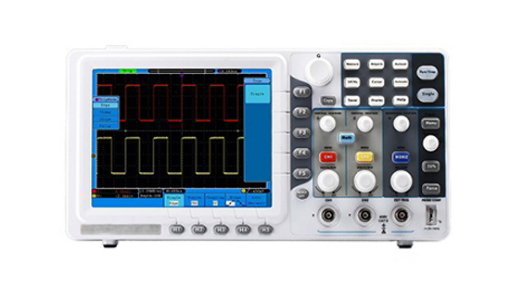A digital storage oscilloscope is a kind of digital equipment with a storage function, which adopts a digital circuit for analog/digital conversion, and realizes the memory of the signal before triggering through the memory. In addition to the functions of an analog oscilloscope, a digital storage oscilloscope also has unique advantages such as waveform triggering, storage, display, measurement, and waveform data analysis and processing.

What is a digital storage oscilloscope?
A digital storage oscilloscope (DSO) is an electronic instrument that measures and records electrical signals. It converts the analog signal into a digital format and stores it in its digital memory, allowing for easy recall and analysis.
Digital storage oscilloscopes are used in a variety of applications. Biomedical engineers use them to measure electrical signals from the human body, such as heartbeats and brainwaves. Telecommunications engineers use DSOs to test cell phones and other communication devices. Aerospace engineers use them to test aircraft components, while automotive engineers use them to test vehicle electronic systems. Design engineers use DSOs to verify the performance of their designs.
Feature of digital storage oscilloscope
Digital storage is the storage of signals in digitally encoded form in the oscilloscope. It has the following characteristics:
- A large amount of pre-trigger information can be displayed.
- Fully automatic measurements can be performed by methods with and without cursors.
- Waveforms can be stored for a long time.
- Waveforms can be transferred to a computer for storage or further analysis.
- A hard copy can be made on a printer or plotter for documentation purposes.
- The newly acquired waveform can be compared with the reference waveform acquired manually by the operator or fully automatically by the oscilloscope.
- Can be judged on a pass/fail basis.
- Waveform information can be processed mathematically.
What are the digital storage oscilloscopes used for?
The digital storage oscilloscope uses digital circuits to complete the storage function, so it is called a "Digital storage oscilloscope" or DSO for short. There is more than just analog circuitry in a DSO between the input signal connector and the oscilloscope's CRT. The waveform of the input signal is stored in memory before being acquired on the CRT. It uses an A/D converter to convert the analog waveform into a digital signal, and then stores it in the memory RAM, and then recalls the content stored in the RAM when needed, and then restores the digital signal to an analog signal through the corresponding D/A converter The amount is displayed on the screen of the oscilloscope tube. In the digital storage oscilloscope, the signal processing function and the signal display function are separated, and its performance index depends entirely on the A/D and D/A converter RAM for signal processing. The waveform we see on the screen of the oscilloscope is always a waveform reconstructed from the collected data, rather than an immediate, continuous waveform display of the signal applied to the input connection.

